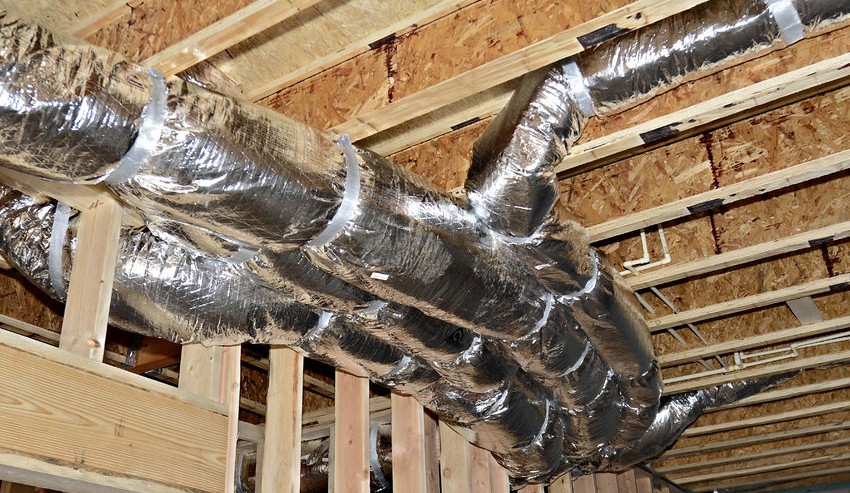Why Leaky Ducts Can Be Dangerous
Ducts may be the simplest component of HVAC system installations, but that fact does not make them any less important. In fact, neglecting your duct work can cause some pretty significant problems over time. Small tears in ducting can create problems that range from mild discomfort all the way to diseases caused by toxic mold or carbon monoxide exposure.
Preventing such dangerous side effects involves having your ducts inspected regularly once every two to three years — as well as paying attention to warning signs that your ducts could be leaking. Without these two checks in place, your ducts could easily have major problems that go unnoticed behind the scenes.
Lower Air Quality and Allergens
The most obvious consequences of having leaky ducts is that they tend to pull in and spread dust, allergens and other substances throughout the house. Substances such as pollen, dust mites and pet dander circulate through ducting and aggravate the sinuses and lungs. Better Health magazine even revealed that one out of every six people experiencing allergy problems are being directly affected by fungi, bacteria or irritants hidden in their duct work.
People with hyperactive allergies or asthma are particularly susceptible to these irritants, and the elderly and children are also extremely vulnerable.
Children breathe at a faster rate and remain closer to the ground where allergens concentrate. A child also has a higher ratio of air per unit of body weight as they breathe. These two factors combined contribute to emergency room visits for colds, flus and asthma attacks. In fact, children under ten experiencing those symptoms make up one of the top five reasons for emergency room visits in the US.
Gases spreading through ducting is another concern. If the ducts pass near indoor garages or combustion appliances, carbon monoxide (CO) can be carried into other areas of the home. Since this deadly gas is odorless and colorless, installing CO monitors throughout the house and having regular ducting inspections are vital.
Mold and Fungi
Everyone knows that HVAC systems are used to change one interior air temperature to another, more comfortable one. Ducts carry this different temperature air throughout the house.
When two different air temperatures meet, such as when cold air in a duct makes contact with hot air in an attic or in walls, the natural moisture in air tends to condense. You can see this effect happening in industrial buildings where metal ducts sometimes have beads of water dripping off of them in the summer.
This same condensation happens in homes, only it is less noticeable. Over time, the condensation could allow mold, fungi or bacteria to grow. Leaky ducts make this danger more likely since more spores are allowed to be pulled into the ducts and more condensation can form around the air leaks.
Black mold can produce toxins that over time cause chronic respiratory conditions, asthma and even brain or liver damage. Preventing mold is one of the prime reasons homeowners need their ducts cleaned and inspected.
Vermin
Tears in ducting can allow insects, rodents and other unmentionable critters to call the ducts their new home. They lay dormant and breed inside the ducts when the systems are turned off. When the systems get turned back on, the animals scatter and infest other areas of the house.
Even worse, droppings, shed exoskeletons and other materials left by the animals attract bacteria, fungus and mold. Clicking on the AC just could be scattering these substances throughout your house when homeowners do not address tears in their ducting.
Detecting and Addressing Duct Leaks
The simplest way to determine if your ducts are leaking is by paying attention to poor or inconsistent air flow. Homeowners may notice that some rooms in the house are cooler or warmer than others. They may also notice a lack of pressure coming out of certain air registers. You can learn more about inconsistent air temperatures by reading our blog post on it.
Inconsistent pressure or temperature could potentially be caused by a dirty air filter, dusty evaporator coils or obstructions in the ducts. Check your filter and change it if necessary, but if that does not fix the problem, other issues could be to blame. Since discovering leaks and diagnosing HVAC problems can be difficult for the average homeowner, having your system inspected regularly every spring and fall is crucial.
Are you in the market for a new heating and air conditioning system? Click here to get free custom prices from reputable HVAC contractors. You’ll receive upfront pricing without having to invite a contractor to your home or even enter your contact information!
Related articles
Common Heating System Problems and Their Solutions





Comments
Comments are disabled for this post